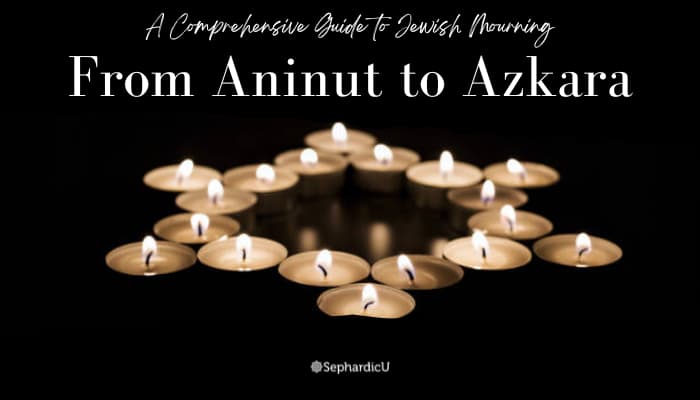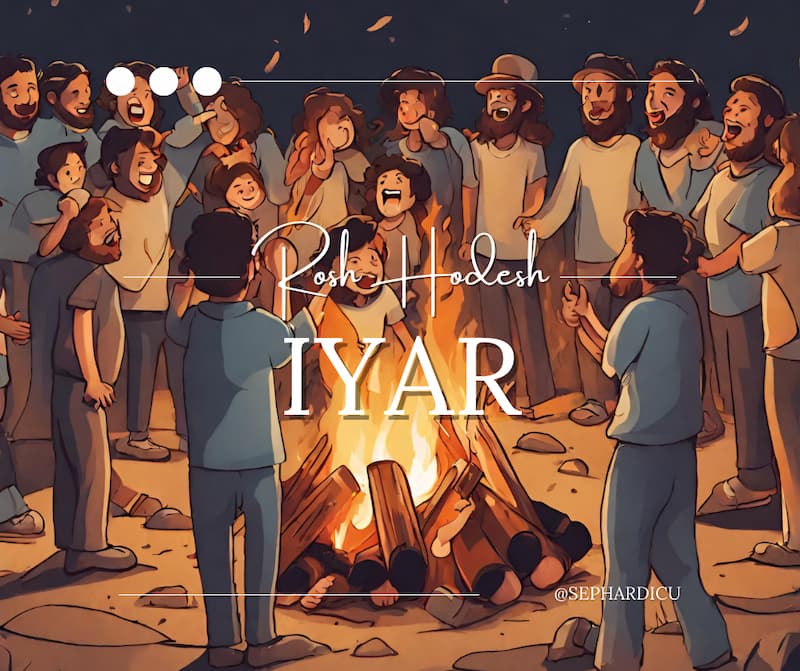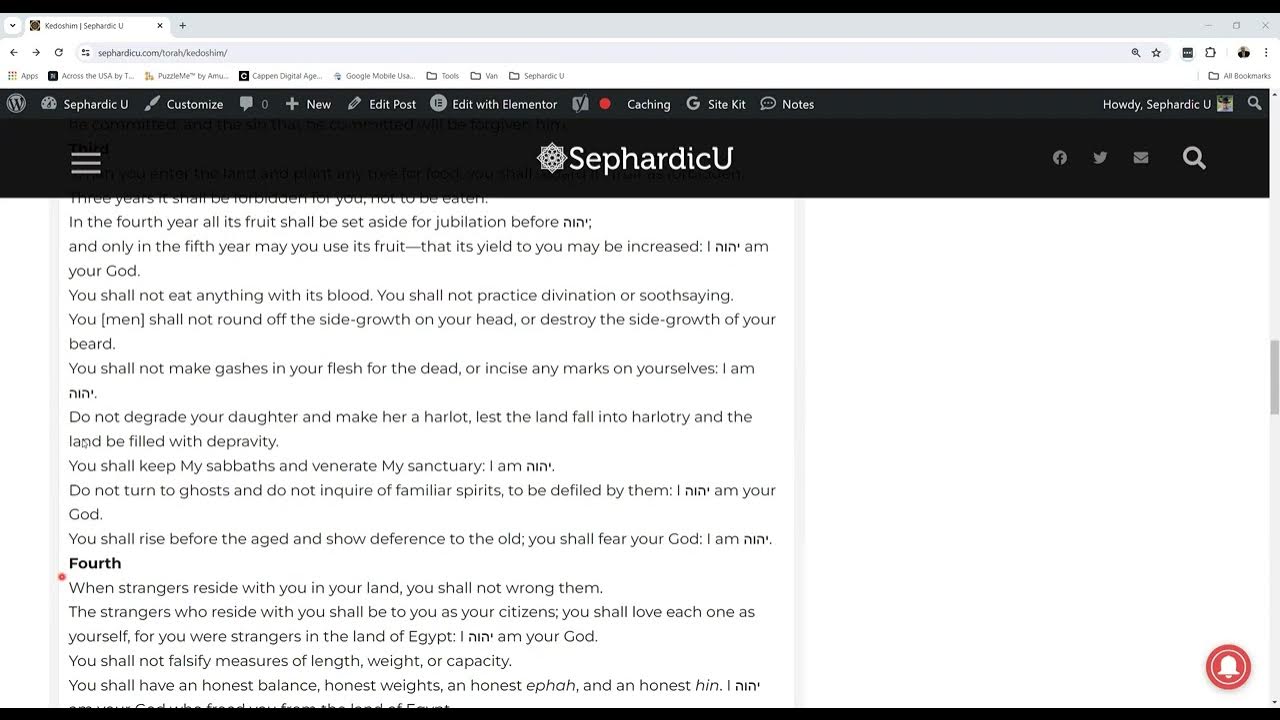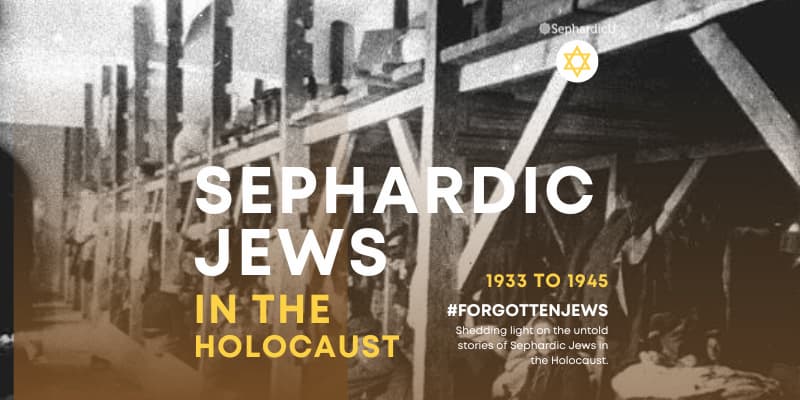Introduction
Welcome to Chapter 3 of our guide on Jewish mourning customs from a Sephardic perspective. In this chapter, we will explore the rituals, customs, and practices associated with Sheloshim, the thirty-day mourning period that follows Shiva. Sheloshim allows mourners to engage in reflection, healing, and continued remembrance of their loved one. We will delve into the emotional and spiritual aspects of Sheloshim, providing insights and guidance to navigate this period with sensitivity and reverence.
Sheloshim is a significant phase in the mourning process, offering mourners an extended period of time to process their grief and begin the healing journey. During these thirty days, mourners gradually transition from the intense mourning of Shiva to a more reflective and introspective state. By understanding the customs and practices associated with Sheloshim in Sephardic traditions, we can embrace the healing power of this period and honor our loved ones’ memory.
Join us as we explore the emotional dimensions, rituals, and community support surrounding Sheloshim from a Sephardic perspective, providing comfort and guidance during this crucial stage of the mourning process.
The Emotional Journey of Sheloshim
Sheloshim encompasses a range of emotions and experiences as mourners navigate their grief. It is a time of reflection, healing, and gradual adjustment to the reality of life without their loved one. Some key aspects of the emotional journey during Sheloshim include:
Acknowledging the Loss:
Sheloshim allows mourners to come to terms with the reality of the loss and accept the absence of their loved one. It is a period where the initial shock and raw emotions of grief begin to subside, giving way to a deeper understanding of the impact of the loss on their lives.
Expressing Emotions:
Mourners may experience a wide range of emotions during Sheloshim, including sadness, anger, guilt, and even moments of peace and acceptance. It is essential to create a safe space for these emotions to be expressed and validated, whether through journaling, talking to a trusted confidant, or seeking professional support.
Seeking Support:
Sheloshim is a time when continued support from family, friends, and the community is crucial. Mourners may benefit from joining support groups, seeking counseling, or engaging in therapy to navigate the complexities of grief and find solace in shared experiences.
Honoring Memories:
Sheloshim provides an opportunity for mourners to actively engage in remembering and honoring their loved one. They may choose to create rituals or engage in activities that pay tribute to the memory of the deceased, such as visiting their gravesite, lighting memorial candles, or participating in acts of charity in their name.
Finding Meaning:
As the initial shock subsides, mourners may begin to search for meaning and purpose in their loss. Sheloshim offers a space for contemplation and introspection, allowing individuals to reflect on the lessons learned, personal growth, and the enduring legacy of their loved one.
Rituals and Customs of Sheloshim
Sheloshim is marked by specific rituals and customs that provide structure and support during the mourning period. These include:
Continued Prayer and Reflection:
Mourners are encouraged to maintain a regular prayer practice during Sheloshim, engaging in personal reflection and spiritual connection. This may involve reciting psalms, reading sacred texts, or participating in communal prayer services to find solace and strength in their faith.
Ongoing Kaddish Recitation:
The recitation of the Mourner’s Kaddish, a prayer of praise and sanctification, continues throughout the Sheloshim period. Mourners gather for the daily minyan, either in the Shiva house or a nearby synagogue, to collectively recite this prayer and find support in the presence of fellow mourners.
Gradual Resumption of Daily Activities:
As Sheloshim progresses, mourners gradually resume their daily activities and routines. This step-by-step reintegration into daily life allows for a sense of normalcy while acknowledging that the grief journey is ongoing.
Observing Restrictions:
While Sheloshim is a time of gradual adjustment, there may still be certain restrictions observed, such as refraining from attending celebrations or joyful events, avoiding public displays of excessive happiness, and maintaining a more subdued appearance out of respect for the deceased.
Acts of Charity:
Engaging in acts of charity, known as tzedakah, is a meaningful practice during Sheloshim. By performing acts of kindness and giving in the name of their loved one, mourners can create a positive impact in the world and honor the memory of the departed.
Community Support during Sheloshim
Community support plays a vital role during the Sheloshim period, providing comfort, companionship, and a sense of belonging. Some ways in which the community offers support include:
Continual Visits and Check-Ins:
Friends, neighbors, and community members visit the mourners throughout the Sheloshim period to offer condolences and provide emotional support. These visits create opportunities for shared remembrance, storytelling, and lending a listening ear to the mourners.
Providing Meals and Assistance:
Similar to Shiva, the community continues to provide meals and practical assistance to the bereaved family during Sheloshim. This support helps alleviate the burden of daily tasks and provides nourishment during a time when mourners may still be adjusting to their new reality.
Communal Gatherings and Study Sessions:
The community may organize gatherings or study sessions, known as shiurim, where mourners can come together to study religious texts, share insights, and find solace in the wisdom of the tradition. These communal gatherings foster a sense of community and provide opportunities for collective healing.
Sustaining Connection:
The community’s presence during Sheloshim reinforces the notion that mourners are not alone in their grief. Continued invitations to social gatherings, inclusion in communal events, and ongoing communication help sustain a sense of connection and support beyond the initial period of mourning.
Conclusion
In this third chapter, we have explored the emotional journey, rituals, and community support surrounding Sheloshim from a Sephardic perspective. We discussed the importance of acknowledging the loss, expressing emotions, seeking support, honoring memories, and finding meaning during this thirty-day mourning period. Additionally, we explored the rituals and customs of Sheloshim, including prayer, Kaddish recitation, resuming daily activities, and acts of charity.
Community support plays a significant role during Sheloshim, offering continual visits, providing meals and assistance, organizing communal gatherings, and sustaining connection beyond the initial period of mourning.
As we continue our journey through the mourning process, let us embrace the healing power of Sheloshim and the support of our Sephardic community. May this chapter serve as a source of comfort, guidance, and understanding as we navigate the emotional landscape of grief, reflection, and healing.
Chapter 1: Aninut – The Sacred Phase Between Death and Burial
Chapter 2: Shiva – Embracing Solace and Support During the Mourning Period
Chapter 3: Sheloshim – Healing and Reflection in the Thirty-Day Mourning Period
Chapter 4: Avelut – Mourning Practices and Observances
Chapter 5: Azkara – Commemorating the Anniversary of the Passing
Within these chapters, we will further explore the customs, traditions, and community support surrounding each phase of the mourning process. Let us honor and remember our loved ones, finding strength and solace in the wisdom of Sephardic Jewish mourning practices.









